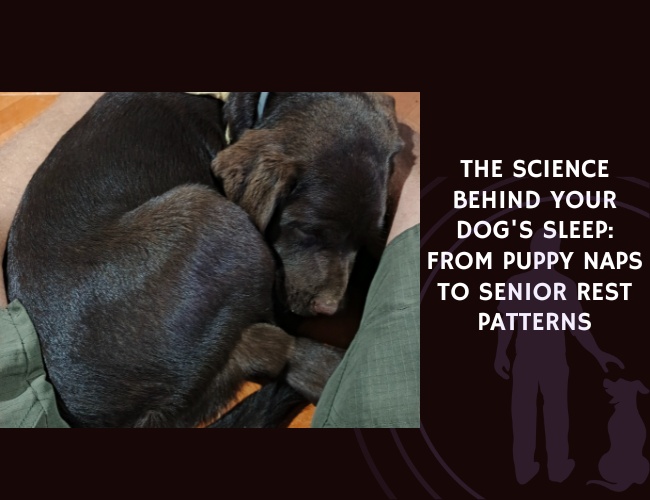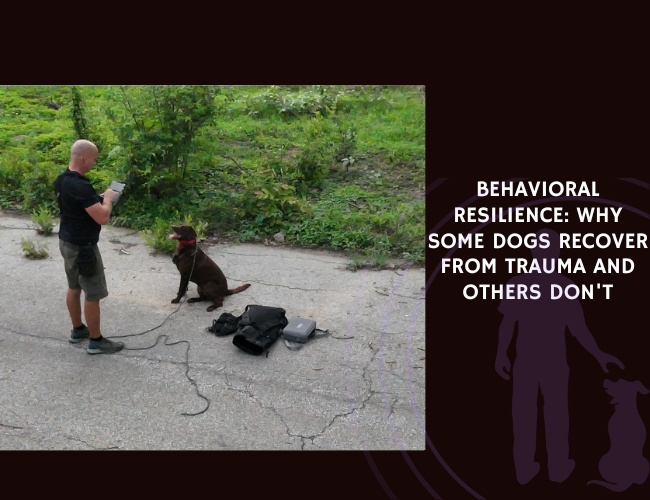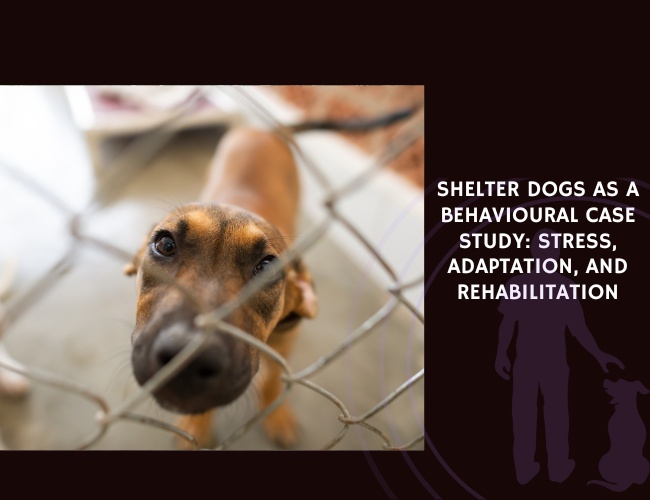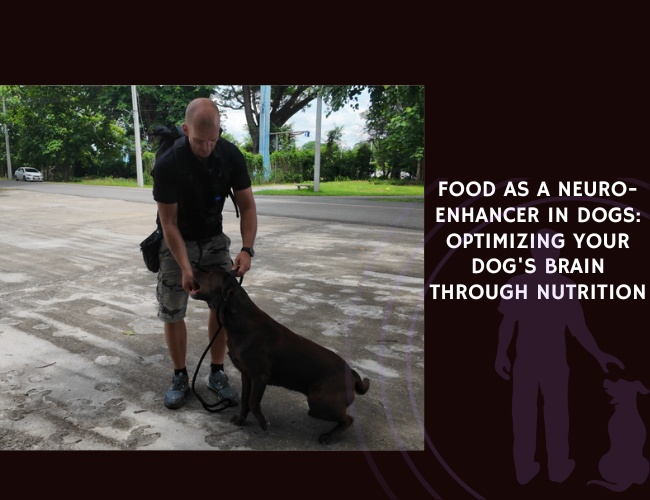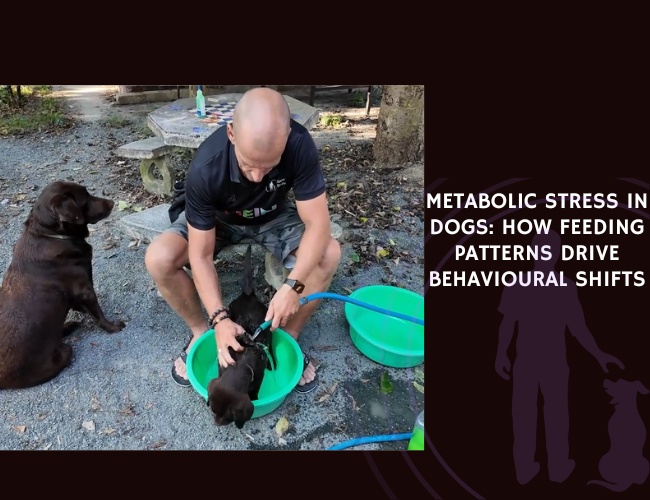Understanding Canine Sleep Cycles
Have you ever watched your dog doze off multiple times a day and wondered if this behavior is normal? Well, dogs indeed have a unique sleep pattern that significantly differs from our own. Let’s dive into understanding the intricacies of canine sleep cycles.
Polyphasic Sleep Patterns
Unlike humans, who typically follow a monophasic sleep cycle—sleeping once for an extended period—dogs exhibit polyphasic sleep patterns. This means that they sleep multiple times throughout a 24-hour period. Your dog might take several naps during the day, totaling their sleep time to a significant part of the day and night.
Two Main Phases of Sleep
Dogs, like humans, experience two primary phases of sleep: Non-Rapid Eye Movement (Non-REM) and Rapid Eye Movement (REM).
- Non-REM Sleep: This stage is critical for physical recovery. During Non-REM sleep, the body repairs tissues, builds bones and muscles, and strengthens the immune system. It is considered the restorative phase of sleep.
- REM Sleep: In this phase, the brain is very active. This is when dreaming occurs, which is essential for memory consolidation and emotional regulation. If you’ve ever noticed your dog twitching, moving their paws, or even vocalizing while sleeping, chances are they are in REM sleep.
Varying Sleep Durations
The amount of sleep required by dogs varies significantly by age. Puppies, for instance, are in a stage of rapid growth and development, requiring between 18 to 20 hours of sleep daily. This ample sleep enables them to gain the necessary energy for growth and learning.
Adult dogs, in their prime, typically need around 12 to 14 hours of sleep per day. This amount factors in the energy spent on daily activities and maintaining overall health.
Senior dogs, on the other hand, tend to sleep more, totaling around 14 to 18 hours a day. As dogs get older, their metabolism slows down, and they need more rest to recover from the physical wear and tear of aging.
Understanding these sleep patterns and durations helps ensure that our canine companions get the rest they need at every stage of their lives.
Influences on Sleep Patterns
Several factors influence how much sleep a dog needs. Activity levels, for instance, play a significant role. Working breeds or highly active dogs might sleep less because they are busier throughout the day. In contrast, larger breeds like Great Danes tend to require more sleep—partly for energy conservation due to their size and partly to support their overall well-being.
Other influences include lifestyle and health. An active dog will require adequate rest to recover physically, while a less stimulated dog may sleep more due to boredom. Additionally, environmental factors such as having a comfortable sleeping area free from disturbances can significantly impact the quality of your dog’s sleep.
Canine sleep is more than just a simple activity. It’s vital for their physical and mental health, supporting everything from growth in puppies to recovery in seniors. Recognizing and understanding your dog’s sleep needs can make sure they remain a happy, healthy, and active part of your family.
As we delve further into understanding what impacts your dog’s sleep, you’ll learn about how different breeds and ages have unique sleep requirements and why sleep is vital for their health. By tuning into your furry friend’s sleep patterns, you can better support their overall well-being.
Breed and Age-Specific Sleep Requirements
Understanding your dog’s unique sleep requirements isn’t just a matter of curiosity—it’s essential for their overall health and well-being. This chapter delves into how a dog’s breed and age influence their sleep needs, providing valuable insights to help you better support your furry friend.
Working Breeds
Working breeds, such as Border Collies and German Shepherds, are known for their high energy and activity levels. Because they are bred for tasks that require agility and alertness, these dogs typically need less sleep compared to other breeds. Their busy lives and vigorous routines help expend a lot of energy through the day, which may result in shorter sleep durations.
However, this doesn’t mean they need any less quality of sleep. Ensuring your working dog gets enough deep sleep is vital for muscle recovery and meeting their high physical demands. If you have a working breed, be mindful of their exercise regimen and give them ample opportunities to rest and rejuvenate.
Larger Breeds
Larger breeds, like Great Danes and Mastiffs, present a different set of sleep patterns. These dogs tend to require more sleep overall, which is a crucial part of their energy conservation process. It takes a significant amount of energy to maintain and move a large body, so their extended sleep periods help them to offset this energy expenditure.
Creating an optimal sleep environment becomes even more important for large breeds. A supportive mattress and a comfortable sleeping area can make a significant difference in their sleep quality and overall health. Remember, their bones and joints bear more weight, so they need ample rest for recovery.
Puppies and Senior Dogs
Sleep is particularly essential for both puppies and senior dogs, but for different reasons. Puppies, for instance, require a staggering 18-20 hours of sleep per day. This substantial sleep time is vital for their growth and brain development. It’s during their snooze sessions that their bodies release growth hormones and their brains consolidate all the new things they learn and experience.
On the other end of the spectrum, senior dogs typically need more sleep—around 14-18 hours per day—due to a slower metabolism and age-related health issues. Older dogs may also experience fragmented sleep patterns due to conditions like arthritis or cognitive dysfunction. Ensuring they have a comfortable, quiet place to rest can help alleviate some of these issues, leading to better sleep quality and improved health.
Factors Influencing Sleep
Several factors influence a dog’s specific sleep needs. Here are some key points to consider:
- Lifestyle and Activity Levels: Active dogs may require more periods of rest for physical recovery, while dogs with less stimulation might oversleep due to boredom.
- Health Conditions: Pain, anxiety, or illnesses can disrupt normal sleep patterns, leading to issues like insomnia or excessive sleepiness.
- Environment: A quiet, safe, and comfortable sleeping environment promotes better sleep quality.
- Age: Both very young and old dogs need increased sleep for different health and developmental reasons.
Understanding these details can help you tailor your approach to your dog’s unique needs, ensuring they get the best possible rest.
As we continue our journey into the importance of canine sleep, we will explore different aspects that affect their well-being, including how sleep impacts their health and common disorders that might disrupt their much-needed rest. But for now, knowing your dog’s breed and age-specific needs is a significant first step in fostering a healthier, happier pet.

The Science of Sleep’s Impact on Dog Health
Understanding the importance of sleep in your dog’s life cannot be overstated. Sleep isn’t just downtime for dogs; it’s a vital process that influences their overall health and well-being. Let’s dive into how deep sleep and REM (rapid eye movement) sleep affect your furry friend’s health.
The Role of Deep Sleep
Deep sleep is also known as Non-REM sleep. During this phase, your dog’s body goes into a state of deep relaxation, which is crucial for physical recovery. Here’s why deep sleep is so essential:
- Tissue Repair: During deep sleep, your dog’s body gets a much-needed break. This is the time when tissue repair occurs. Muscle growth and repair happen most effectively during these deep sleep stages, which helps your pup bounce back after an active day.
- Immune System Boost: A strong immune system is crucial for your dog’s ability to fight off infections and stay healthy. Deep sleep helps boost the immune system, making your canine friend more resilient against diseases and illnesses.
- Energy Restoration: Deep sleep ensures that your dog’s energy levels are restored. Without adequate deep sleep, your pup might seem lethargic or overly tired.
The Importance of REM Sleep
REM sleep is another critical phase where your dog’s eyes move rapidly behind their closed lids, indicating they are dreaming. This phase is shorter but equally important for your dog’s mental well-being.
- Memory Consolidation: During REM sleep, the brain processes and stores information from the day. This phase is essential for memory consolidation, helping your dog retain training and new experiences. Research shows that puppies exhibit improved learning and memory retention after REM sleep.
- Emotional Regulation: Emotions like fear, excitement, and even anxiety, are processed during REM sleep. This helps in emotional regulation and maintains behavioral stability. Sleep-deprived dogs can exhibit irritability and may have trouble managing their emotions.
The Consequences of Sleep Deprivation
Just like humans, dogs can suffer from the negative effects of sleep deprivation. Here are some issues that can arise if your dog’s sleep is routinely disrupted or insufficient:
- Behavioral Issues: Sleep deprivation can lead to hyperactivity, aggressiveness, or irritability in dogs. Dogs that aren’t getting enough sleep may exhibit unwanted behaviors, making training and daily life more challenging.
- Reduced Cognitive Abilities: A tired dog might seem like they’re just lazy, but in reality, their cognitive abilities could be impaired. Lack of sleep can reduce problem-solving skills, making it harder for them to learn new tasks or remember commands.
- Health Problems: Chronic sleep deprivation can compromise your dog’s health, potentially leading to more severe issues. For example, stress levels increase significantly in sleep-deprived dogs, which can have long-term health implications.
Understanding these aspects of your dog’s sleep can assist you in ensuring they get the rest they need for optimum health and happiness. While there are still many areas to explore in canine sleep research, it is clear that both deep sleep and REM sleep are fundamental to your dog’s well-being.
As you’ve learned, the importance of creating optimal sleep conditions for your dog cannot be overstated. Making sure they have a quiet and comfortable environment is key. Additionally, maintaining a stable routine for feeding, exercise, and bedtime helps. In the next part of our discussion, we’ll continue to explore ways to improve your dog’s sleep and maintain their overall health.
Common Sleep Disorders and Their Causes
Just like humans, dogs can face sleep disorders which can impact their overall health and behavior. Understanding the various causes behind these disorders can help in providing the necessary care and environment for a restful sleep. Here are some common sleep disorders and their causes.
Insomnia in Dogs
Dogs can suffer from insomnia too, and it’s often due to various underlying issues. Here’s how you can identify and help manage insomnia in your furry friend:
- Pain and Medical Conditions: Chronic pain from arthritis, injuries, or other medical conditions can keep your dog up at night. If you notice your dog shifting positions frequently or showing signs of discomfort, it might be time for a vet visit.
- Anxiety and Stress: Loud noises, changes in the environment, or separation anxiety can lead to restless nights. Dogs are sensitive creatures and can pick up on our stress as well, leading to their own anxiety. Creating a calm, supportive environment can help alleviating some of this anxiety.
- Environmental Disturbances: Bright lights, loud noises, or an uncomfortable sleeping spot can prevent your dog from getting good rest. Ensure their sleeping area is quiet, dark, and comfortable to promote better sleep.
Cognitive Dysfunction in Senior Dogs
As dogs age, they might experience a condition similar to dementia in humans, known as Cognitive Dysfunction Syndrome (CDS). This condition often leads to disrupted sleep patterns among other issues.
- Behavioral Changes: Senior dogs with CDS may become confused easily, forget training, or display unusual behaviors. These changes can lead to nighttime restlessness and fragmented sleep.
- Physical Discomfort: Older dogs may suffer from conditions like arthritis that cause discomfort and make it harder to settle down for the night. Providing orthopedic beds and maintaining a consistent routine can help manage symptoms.

Excessive Sleepiness
While it’s normal for dogs to sleep a lot, especially puppies and seniors, excessive sleepiness can sometimes indicate an underlying health issue.
- Hypothyroidism: This condition results in a slower metabolism, causing lethargy and excessive sleep. It’s a common endocrine disorder in dogs and can be diagnosed and managed by a vet.
- Depression: Dogs can exhibit symptoms of depression due to a lack of stimulation, changes in the household, or the loss of a companion. Depressed dogs may sleep more than usual and show little interest in activities they previously enjoyed.
- Other Health Conditions: Various other health issues like heart disease, diabetes, or infections can cause excessive tiredness. Monitoring your dog’s overall behavior and seeking veterinary advice is important if you notice unusual sleep patterns.
Promoting Healthy Sleep Habits
Creating an optimal sleep environment plays a significant role in ensuring your dog gets the rest they need. Follow these tips to promote better sleep for your dog:
- Consistent Routine: Establish regular feeding, exercise, and bedtime routines. Consistency helps regulate their internal clock.
- Comfortable Sleeping Area: Provide a quiet, cozy, and dark place for your dog to sleep. Orthopedic beds can help reduce discomfort, especially for older dogs.
- Adequate Stimulation: Ensure your dog gets enough physical and mental exercise through walks, playtime, and enrichment activities. A tired dog is more likely to sleep well at night.
- Address Health Issues: If your dog’s sleep problems persist, consult a veterinarian to identify and treat any underlying health issues.
By recognizing and addressing these common sleep disorders and their causes, you can help your dog enjoy healthier and more restful sleep, ultimately improving their overall well-being and happiness.
Transitioning from understanding these disorders, next you can learn more about how to create the ideal environment for your dog’s sleep, ensuring they get the best rest possible.
Creating Optimal Sleep Conditions
Ensuring your dog gets optimal sleep is crucial for their overall health and well-being. Let’s explore how you can create the best sleep conditions for your furry friend.
Establish a Consistent Routine
Dogs thrive on routine. Consistency in daily activities helps regulate their sleep patterns. Here’s how you can establish a consistent routine:
- Feeding: Serve meals at the same times each day. Avoid feeding your dog right before bedtime, as a full stomach can disrupt their sleep.
- Exercise: Regular physical activity is vital. Schedule playtime or walks at the same times daily. This consistency helps your dog burn off excess energy, making them more likely to sleep soundly.
- Bedtime: Aim for the same bedtime every night. This regularity helps their body recognize when it’s time to relax and sleep.
Creating these predictable patterns helps your dog feel secure and can significantly improve their sleep quality.
Provide a Comfortable Sleeping Environment
The environment in which your dog sleeps impacts the quality of their rest. Creating a quiet, comfortable space is essential.
- Location: Choose a spot that’s away from heavy foot traffic and loud noises. This helps minimize disturbances and allows your dog to rest peacefully.
- Bedding: Invest in a good-quality dog bed that supports their body, especially if they have any joint issues. A bed with cushioning can make a significant difference for their comfort.
- Temperature: Ensure the sleeping area is neither too hot nor too cold. Comfort is key for a good night’s sleep.
Consider these adjustments to create a cozy haven for your dog’s sleep needs.
Ensure Adequate Physical and Mental Stimulation
Both physical and mental stimulation during waking hours contribute to better sleep.
- Physical Exercise: Engage your dog in regular physical activities like walking, playing fetch, or swimming. Exercise helps tire them out, making it easier for them to fall asleep.
- Mental Stimulation: Interactive toys, puzzle feeders, and training sessions keep your dog’s mind engaged. A stimulated mind is less likely to experience restlessness at night.
Balancing mental and physical activities helps in achieving restful, uninterrupted sleep.
Addressing Specific Sleep Disruptions
Sometimes, despite the best conditions, your dog might face sleep disruptions. Understanding and addressing these can improve their sleep quality.
- Pain Management: Consult your veterinarian if your dog seems uncomfortable. Conditions like arthritis can cause restlessness, and managing the pain can help them sleep better.
- Anxiety Reduction: If your dog suffers from anxiety, consider anxiety-reducing products like calming beds or speak with your vet about possible treatments.
- Environmental Adjustments: Sometimes, small changes like blackout curtains or white noise machines can reduce environmental disturbances that affect your dog’s sleep.
Transition
By ensuring your dog has a consistent routine, a comfortable sleeping environment, and adequate stimulation, you can help promote their healthy sleep habits. This will lead to a happier and healthier life for your furry friend. We will continue to explore and understand the fascinating aspects of canine sleep in future discussions, focusing on how ongoing research may deepen our understanding of our beloved pets’ needs.
Future Research and Understanding
The Relationship Between Sleep Quality and Behavior
Ongoing research is shedding light on how sleep quality impacts canine behavior. Studies have found that disrupted sleep can lead to increased aggression, anxiety, and hyperactivity in dogs. For instance, dogs with poor sleep patterns tend to exhibit higher stress levels and reduced problem-solving abilities, as they are not well-rested enough to engage in typical behaviors and training activities. Understanding these links can help pet owners and veterinarians create better sleep environments and routines for dogs, potentially reducing such negative behaviors.
Breed-Specific Sleep Needs
Researchers are also delving into the specific sleep needs of different dog breeds. It is recognized that working breeds, such as Border Collies and German Shepherds, generally require less sleep due to their high activity levels. Conversely, large breeds like Great Danes need more rest to conserve energy. These insights are crucial for breed-specific care and can help tailor routines to ensure each dog gets the appropriate amount of sleep for its needs.
By better understanding how various breeds sleep, we can also predict and address potential sleep-related issues before they escalate. Ongoing studies are crucial in this regard and will continue to provide valuable information to enhance the well-being of our furry friends.
Sleep’s Role in Cognitive Aging
Another significant area of research is the study of sleep patterns and cognitive aging in dogs. Older dogs often experience fragmented sleep cycles, much like humans with dementia. This disrupted sleep can exacerbate cognitive decline, leading to conditions such as Canine Cognitive Dysfunction (CCD).
Exploring how sleep aids in memory formation and cognitive health in aging dogs can provide deeper insights. Researchers are keen on understanding how improving sleep quality might slow the progression of cognitive decline. This knowledge can be pivotal in developing treatments and care strategies for senior dogs, ensuring they maintain a good quality of life as they age.
Impact of Diet and Environment on Sleep
Additional research areas include the impact of diet and environment on canine sleep. Diet plays a crucial role in sleep quality, with studies indicating that feeding dogs large meals or highly stimulating foods before bedtime can disrupt their sleep. Providing a balanced diet and timely feeding schedule could be simple yet effective strategies to improve sleep patterns.
Similarly, the environment where a dog sleeps is crucial. A cozy, quiet area away from disturbances can significantly enhance sleep quality. Ongoing research aims to pinpoint the best practices for setting up these environments, ensuring dogs can get the rest they need.

The Role of Emerging Technologies
Emerging technologies are also paving the way for new insights into canine sleep. Wearable devices and advanced tracking systems are being used to monitor dogs’ sleep patterns more accurately. These technologies can provide real-time data, offering a window into how various factors affect sleep. This advancement could revolutionize how we understand and address sleep issues in dogs, leading to better overall care practices.
In sum, ongoing research into canine sleep is opening up new avenues for understanding and improving our dogs’ health. By continuing to explore these areas, we can develop more effective strategies to ensure that our furry companions lead healthy, happy lives.
Slumber’s Symphony: Your Dog’s Sleep Journey
Just like that, we’ve traversed the vivid landscape of your dog’s sleep patterns, from the puppy’s dream-filled days to the senior’s peaceful nights. Each wag, twitch, and sigh during sleep tells a story of growth, restoration, and emotional balance.
Now that you’re armed with this knowledge, let’s make a pledge to our four-legged friends. Commit to creating a sleep environment that nurtures their unique needs. Invest in a cozy bed for those long puppy naps, ensure plenty of playtime for active adults, and offer extra TLC to seniors during their extended rests.
Sweet dreams, friends – both two and four-legged! 🐾😌

